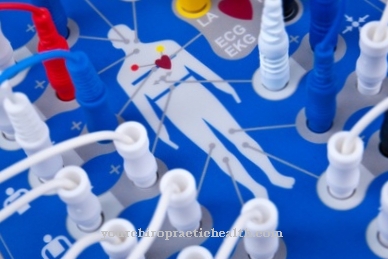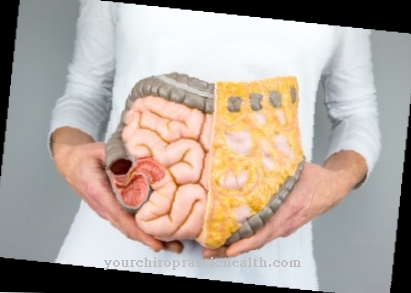At a biopsy it is a medical examination of body tissue for certain diseases, which is taken for this purpose. The Tissue samples can be taken from all body parts / organs.
What is a biopsy?

The Tissue extraction or biopsy is usually removed from tumors using a special needle. The needle is inserted directly through the skin without a cut. A distinction is made between punch and fine needle biopsy. In both biopsy variants, the hollow needle is guided to the tumor during local anesthesia and the suspicious cells are removed.
In order to obtain sufficient cell material for a diagnosis, with this variant of the biopsy the hollow needle has to be brought to the tumor several times. The punch biopsy is performed in almost the same way, but with needles that have a larger diameter.
Such needles can be used to remove even smaller pieces of tissue and not just individual cells. However, even with this type of biopsy, it makes sense to take additional samples, as this means that sufficient tissue is available for examination.
Function, effect & goals
A biopsy is by no means the very first step in the diagnostic chain. For example, if cancer is suspected, ultrasound or magnetic resonance imaging is performed beforehand.
However, a suspected disease can be diagnosed more reliably by means of the biopsy, as the tissue comes directly from the suspected area. Apart from the punch and fine needle biopsy (puncture), the vacuum biopsy is also used.Tissue is removed with a hollow needle and a vacuum is present inside.
Such biopsies are used, for example, on breast tissue. Suspicious tissue can also be cut out with a scalpel (excision biopsy) or special instruments such as loops, brushes or forceps (endoscopic biopsy).
The most common biopsies are, for example: The liver biopsy, which is used to monitor the progress or diagnose various liver diseases. A prostate biopsy is performed if malignant changes in the prostate (prostate cancer) are suspected. The uterine biopsy, which can help with suspicious changes in the cervix (cervical carcinoma). Cell swabs are specifically made from the suspicious area.
An operation (conization) is often necessary to take a cone-shaped sample from the uterus. With a breast biopsy (breast biopsy), the suspicious tissue is obtained through a punch biopsy in most cases. If malignant skin tumors (melanomas) are suspected, an excision is made, whereby the tumor is cut out with a certain safety margin. In this way, the attending physician will remove all of the tumor tissue with the greatest possible probability.
Before starting a biopsy, a number of important aspects must be considered. During an organ puncture (fine needle biopsy) in the abdomen, the person concerned must always be sober, so they must not drink or eat anything several hours before the treatment. If the person has a very hairy abdominal area, it may be shaved in the area of the biopsy.
The attending physician checks the current coagulation values by means of a blood test. If desired, the patient may take a pain reliever and sedative before the biopsy begins. When the treatment begins, the doctor determines the exact position of the tissue using ultrasound, endoscopic or radiological methods.
Immediately after the local anesthesia and disinfection of the skin area and possibly the corresponding parts of the organs, one or more samples are taken. The examination is then carried out in a specialized laboratory.
You can find your medication here
➔ Medicines for painRisks & dangers
During one biopsy The following complications occur in the rarest of cases: Infections of the most varied types, bleeding (therefore the coagulation test beforehand) within the area of the biopsy, an injury to the neighboring tissue structures and other nearby organs.
Cardiovascular disorders as well as breathing disorders occur very rarely, which can be traced back to the administration of pain relievers or sedatives. As a side effect, tumor cell spread rarely plays a role. In each variant, the biopsy is only a relatively minor intervention.
Thus, apart from any anesthesia that may be required, biopsies are considered to be of little stress. Previous studies have shown that tumor cells carried over by a biopsy can only very rarely grow again in other areas of the affected body. Although most biopsies are taken during the diagnosis of breast / prostate cancer, for example, there is no evidence of any tumor cells being carried over.

























.jpg)


